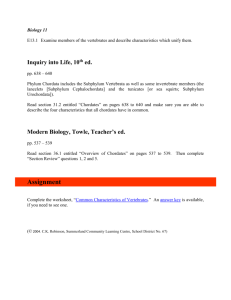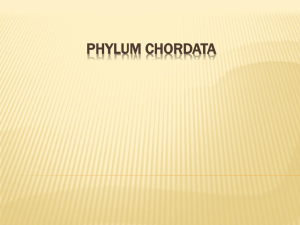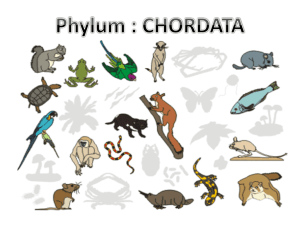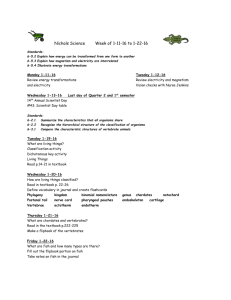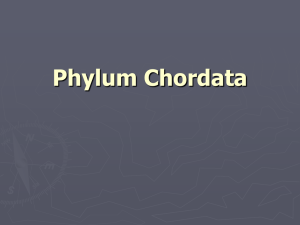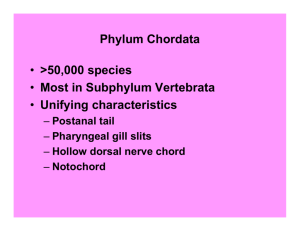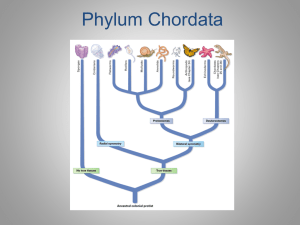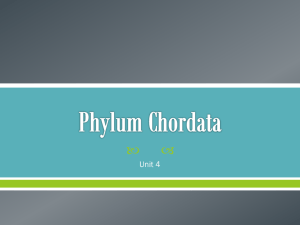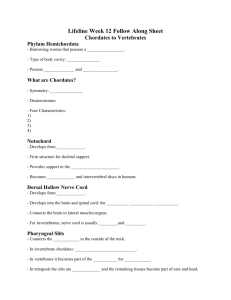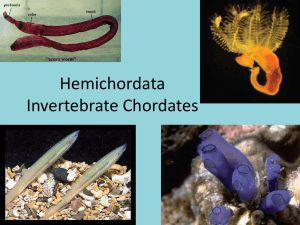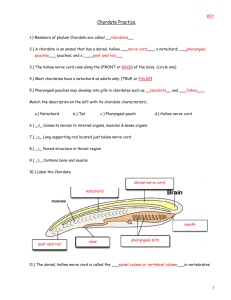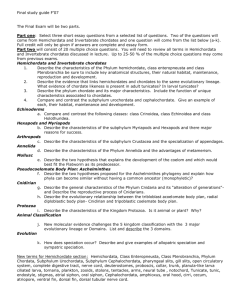chordates fact sheet
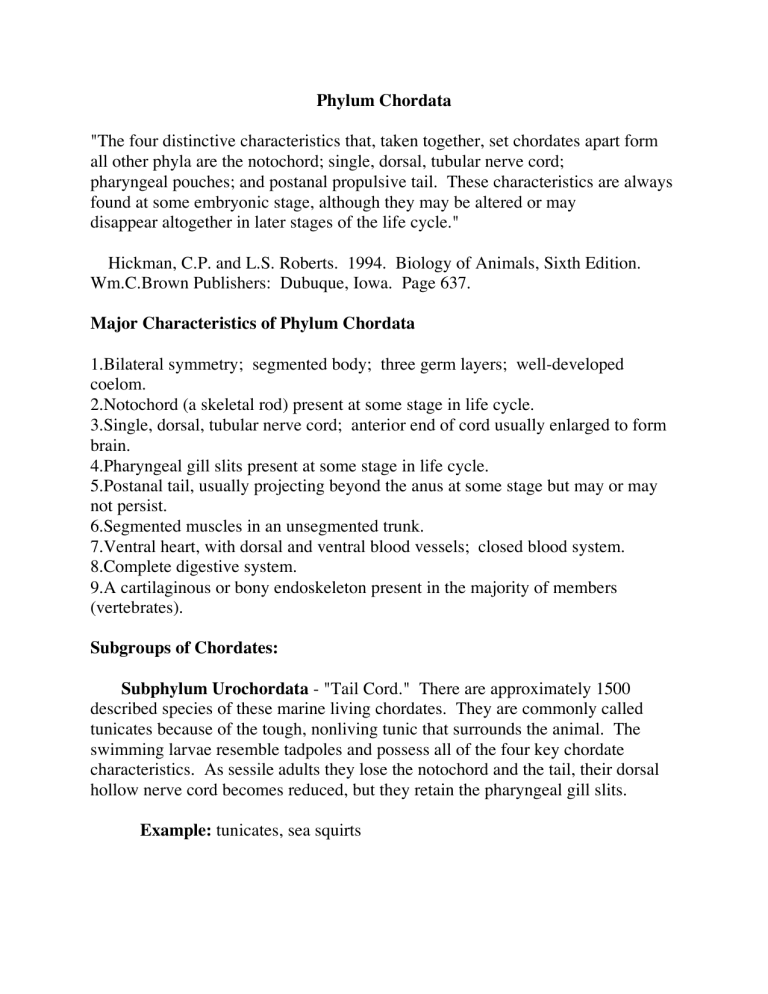
Phylum Chordata
"The four distinctive characteristics that, taken together, set chordates apart form all other phyla are the notochord; single, dorsal, tubular nerve cord; pharyngeal pouches; and postanal propulsive tail. These characteristics are always found at some embryonic stage, although they may be altered or may disappear altogether in later stages of the life cycle."
Hickman, C.P. and L.S. Roberts. 1994. Biology of Animals, Sixth Edition.
Wm.C.Brown Publishers: Dubuque, Iowa. Page 637.
Major Characteristics of Phylum Chordata
1.Bilateral symmetry; segmented body; three germ layers; well-developed coelom.
2.Notochord (a skeletal rod) present at some stage in life cycle.
3.Single, dorsal, tubular nerve cord; anterior end of cord usually enlarged to form brain.
4.Pharyngeal gill slits present at some stage in life cycle.
5.Postanal tail, usually projecting beyond the anus at some stage but may or may not persist.
6.Segmented muscles in an unsegmented trunk.
7.Ventral heart, with dorsal and ventral blood vessels; closed blood system.
8.Complete digestive system.
9.A cartilaginous or bony endoskeleton present in the majority of members
(vertebrates).
Subgroups of Chordates:
Subphylum Urochordata - "Tail Cord." There are approximately 1500 described species of these marine living chordates. They are commonly called tunicates because of the tough, nonliving tunic that surrounds the animal. The swimming larvae resemble tadpoles and possess all of the four key chordate characteristics. As sessile adults they lose the notochord and the tail, their dorsal hollow nerve cord becomes reduced, but they retain the pharyngeal gill slits.
Example: tunicates, sea squirts
Subphylum Cephalochordata - "Head Cord." There are only 25 species described in this subphylum of marine lancelets. They are all small, slender, laterally compressed, translucent animals. These simple animals are often used as a textbook example to represent the four key chordate characteristics. Once considered to be the ancestor of the chordates, they are still believed to more closely resemble the earliest prevertebrates than any other animal known.
Examples : Amphioxus (the lancelets)
Subphylum Vertebrata - "Backboned." This is the largest and most diverse subphylum of chordates whose evolution has been guided by the basic adaptations of the living endoskeleton, efficient respiration, advanced nervous system, and paired limbs. This group is divided into those without jaws and those with jawed mouths. This course will take a close look at this subphylum so we have included separate pages for most of the taxonomic classes for this group.
Examples: lampreys, sharks, fish, frogs, snakes, pigeons, pigs, humans
Superclasses and Classes of Subphylum Vertebrata
Superclass Agnatha ("Without jaws"): Those vertebrates without true jaws or appendages including the hagfishes and the lampreys.
Superclass Gnathostomata ("Jawed mouth"): Those vertebrates with jaws and usually with paired appendages.
1.Class Chondrichthyes - The cartilaginous fishes. Examples: sharks, skates, rays.
2.Class Osteichthyes - The bony fishes. Examples: perch, goldfish, trout.
3.Class Amphibia - The amphibians. Examples: frogs, toads, salamanders.
4.Class Reptilia - The reptiles. Examples: snakes, lizards, turtles.
5.Class Aves - The birds. Examples: pigeons, ostriches, hawks, robins.
6.Class Mammalia - The mammals. Examples: mice, monkeys, whales, lions
